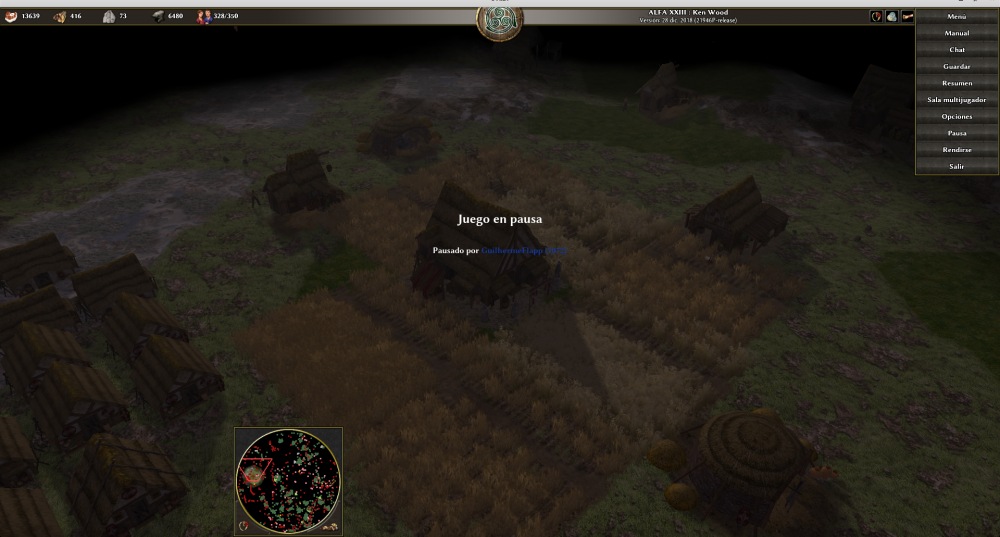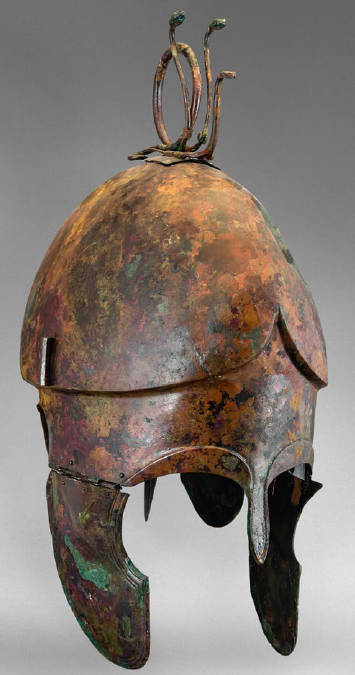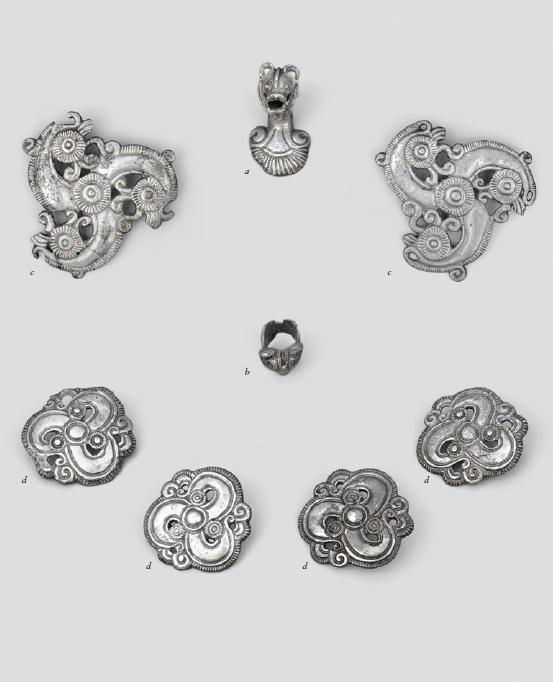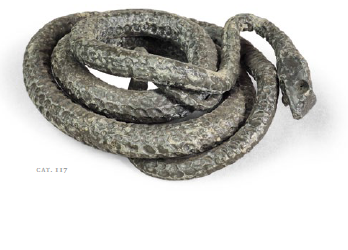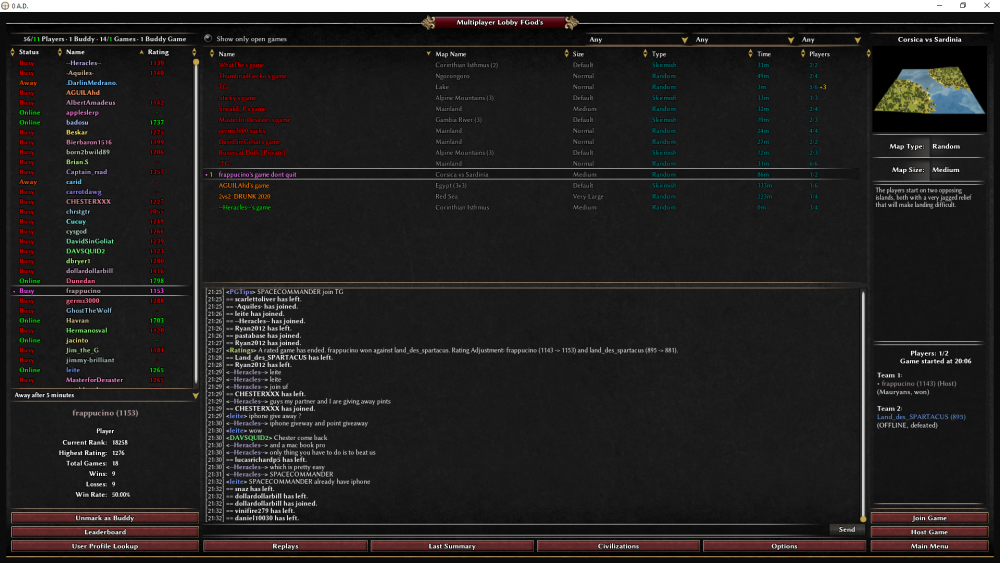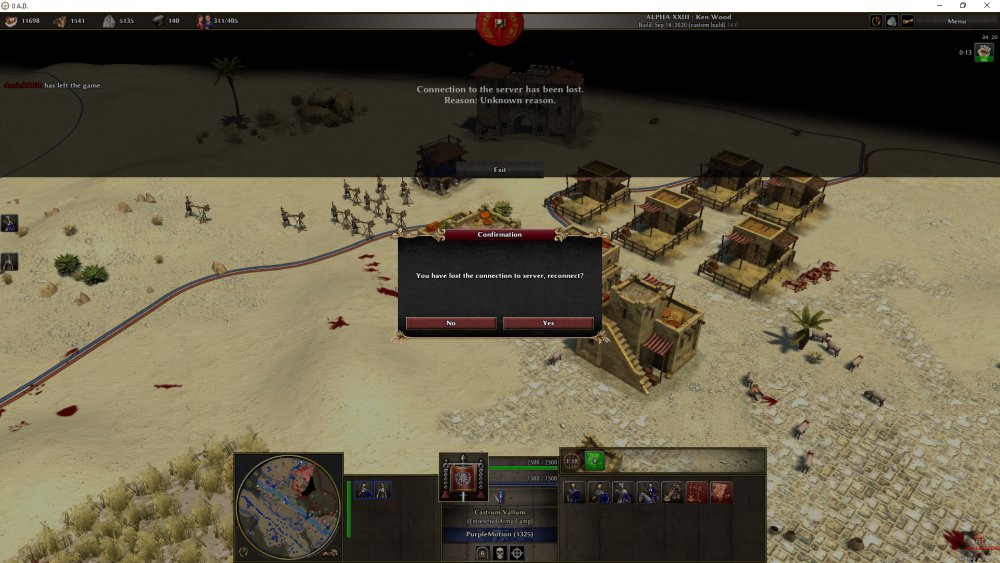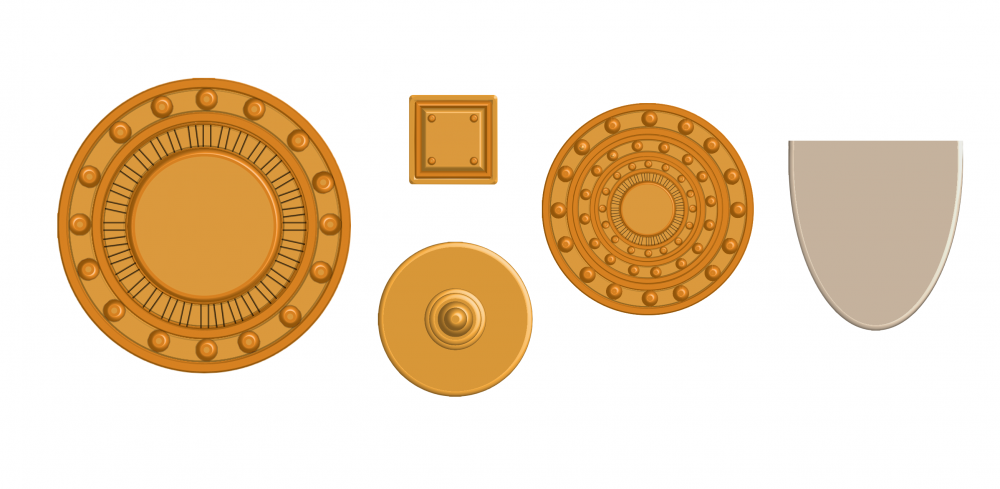Leaderboard
Popular Content
Showing content with the highest reputation on 2020-11-08 in all areas
-
Recreated the 128x128 thureos texture in 256x256 size and created two new shield textures for the Thracians.3 points
-
@Thorfinn the Shallow Minded When I say I believe battalions are the way to go, it's to be able to depict things like this. It is very difficult to depict the nuance of "maneuverable" Roman swordsmen vs. "immovable object" Macedonian phalangites using the game's current mosh pit combat. With mosh pit combat you have to use unintuitive things like attack bonuses and auras and even then it is unsatisfactory in visually depicting what the combat would be like. Without battalions you can't even have the concept of "flanks" let alone the battle lines and complex maneuvers which defined the era.2 points
-
For Hellenistic warfare specifically, the following nine troop types are listed by Aelian Tactica §2, which is largely similar to Arrian Tactica §2–4 and Asclepiodotus Tactica §1 (all three go back to a (now lost) treatise of Poseidonius, which in turn is based on an (also lost) Tactica by Polybius): infantry: hoplites, i.e. heavy infantry, equipped with (partially) metal armour, greaves, heavy shields (aspis), and long spears or pikes peltasts, equipped with lighter armour, boots, smaller shields (peltē), and shorter spears; hence more mobile psiloi, i.e. light infantry (archers, javelineers, slingers, and those that throw rocks by hand); no armour, greaves, or shields cavalry: lancers javelin cavalry horse archers cataphracts, i.e. armoured horses chariotry elephantry As for the length of thrusting spear and pike, it varied over time (the values are only approximates, obviously): classical hoplites: 8 feet → 2.56 m Iphicrates' peltasts: 16 feet → 5.12 m Alexander's pikemen: 10–12 cubits → 4.80–5.76 m pikemen c. 300 BC: 16 cubits → 7.68 m Late Hellenistic pikemen: 14 cubits → 6.72 m See Christopher Matthew “The Length of the Sarissa” Antichthon 46 (January 2012) 79–100 https://doi.org/10.1017/S0066477400000150 for more details. The main source for Iphicrates' reforms is Diodorus Siculus Library 15.44.3: http://perseus.uchicago.edu/perseus-cgi/citequery3.pl?dbname=GreekTexts&getid=1&query=Diod. Sic. 15.44.3 Indeed. The relevant section is Polybius Histories XVIII.28–32: http://perseus.uchicago.edu/perseus-cgi/citequery3.pl?dbname=GreekTexts&getid=1&query=Polyb. 18.28 http://perseus.uchicago.edu/perseus-cgi/citequery3.pl?dbname=GreekTexts&getid=1&query=Polyb. 18.29 http://perseus.uchicago.edu/perseus-cgi/citequery3.pl?dbname=GreekTexts&getid=1&query=Polyb. 18.30 http://perseus.uchicago.edu/perseus-cgi/citequery3.pl?dbname=GreekTexts&getid=1&query=Polyb. 18.31 http://perseus.uchicago.edu/perseus-cgi/citequery3.pl?dbname=GreekTexts&getid=1&query=Polyb. 18.32 Basically, as long as the phalanx holds, it can withstand and drive back anything in front of them, but when it breaks (e.g. due to uneven terrain), it becomes vulnerable and the more manoevrable Romans can make mincemeat of them.2 points
-
2 points
-
Two lots of 0AD Newbie Rush fun today - you lucky people! First game is a Youtube experiment - a 3 way collaboration. Here we have a 1v1 battle between two other 0AD Youtubers, Tom0AD and Alistair Findlay. You can view the game from their own perspectives as they played it on their channels - links in my videos description, but first of all, here is my general overview and match commentary;2 points
-
@ChronA: I think a god deal of what you have is well thought out. But... The hugest issue I see is that you are putting out a system that seems a bit needlessly complex. In fairness, the same can be said for 0 A.D. and many RTS games. As I see it, there doesn't need to be an emphasis on differentiating armament for the most part. This is a general idea of Thorfinn's Shallow Minded approach to the concept: Heavy infantry: Strengths: heavy armour, frontal attacks. Weaknesses: Small Stamina, bad line of sight, vulnerable to flanking manoeuvres, and kiting. Use: the meat-grinder at the front that is capable of small distance charging to catch out ranged units that are too close. Skirmisher: Strengths: Armour piercing attack, high damage, good line-of-sight. Weaknesses: Low armour, short range. Use: screening force that can lay out ambushes on careless players. Its armour lets it hold up a bit against ranged attacks. Can be a decent counter to Heavy infantry with good micro. The list goes on. Many more special outliers can just be worked out just by modifying these. Let's take an example: Skiritae. Skiritae were essentially heavy infantry given the fact that they were fielded in the Spartan phalanx formation at the Battle of Mantinea in the Peloponnesian War, but their function along with what Xenophon writes about in Cyropaedia implies that they were somewhat like special ops troops (the analogy is a stretch but bear with me.). Thus, as heavy infantry, they would have a lower amount of armour but would on the flip-side enjoy higher stamina that would allow them to serve a more flexible purpose. So anyways, a lot of what badosu wrote above were some of my thoughts but written in a more succinct fashion.2 points
-
1 point
-
Hello @user1 rutto (1237) Vs SuperSpartacus : rutto quit without resigning. Thanks. commands.txt1 point
-
1 point
-
Everyone, a note on terminology: unless explicitly stated otherwise, “light” means “ranged” and “heavy” means “melee” (i.e. troops that fought in formation). The terms refer to their rôle on the battlefield, not to the heaviness of their arms and armour, as some people mistakingly assume. A few modern authors also use the term “medium” for troops that could fulfill both functions, though that term is not as widespread. This observation is worth a bit more attention. There is more than one reason for this. Firstly, it's indeed mostly true: light troops indeed had much the same function: raiding, skirmishing, chasing off enemy skirmishers, harassing enemy troops with projectiles to force them to raise their shields and stay put, and killing off fleeing opponents; whether they're armed with javelin, sling, bow and arrow, crossbow, musket, or rifle is of lesser importance—that does not mean there are no differences, though. Secondly, battles were typically decided by the main battle formation (i.e. heavy infantry) or a (heavy) cavalry charge, so other troops deserve less attention. Thirdly, light troops were typically of lesser social status, therefore of less interest to authors and their public; reading and writing were very much elite activities. Likewise, servants and slaves are rarely mentioned in texts, even though we know they were present in large numbers. For instance, in Classical Greek warfare, most citizen hoplites had a servant each with them. By contrast, in the Macedonian army of Philip and Alexander, eight pikemen only had one servant between them; about the same ratio was true for imperial Roman legionaries. Source, please? Picking a spear, wrapping a leather thong (the ἀνκύλε ankyle or āmentum) around it, holding it in the right place, choosing a target, lifting your arm, then throwing it, releasing the javelin while keeping hold of the strap—I fail to see how this is faster than picking a pebble from a purse and slinging it, or placing an arrow on the bow and pulling back the string. Crossbows, arquebuses, muskets etc. are indeed a lot slower. They're adopted nonetheless because they require much less skill to use; when aiming and shooting you expose less of your body than when using javelin, sling, or bow and error; and they can be reloaded when hiding behind shields or walls, making them especially suitable for siege warfare. It's a bit more subtle than that. I wrote about it earlier in more detail (see this post). Xenophon Anabasis 3.3.16–17: Though you're right slings were cheap (basically a strip of clocth), slingers were specialists. Also, “elite slingers” is a bit of an oxymoron: they were of low social status and came from poor families in rural areas, but had a lifetime of experience with the sling: boys herded livestock from a young age, using slings to keep the herd together and fend off wolves etc. When more than one son survived into adulthood (infant and child mortality were very high in pre-modern times), only one could inherit what little property the family had, therefore to avoid poverty and have a chance at a better life, the others went abroad to serve as mercenaries. There was no such thing as an “unskilled slinger”. Archers were specialists too, though of a higher social status. The bow and arrow is very much an elite weapon: composite bows and strings were delicate weapons, requiring high skill to make and maintain, therefore not cheap. Moreover, archery requires years of practice, which means skilled archers could only be people who had plenty of free time (typically a leisure class whose lands were worked by others). To the best of my knowledge, the staff sling (fūstibalus) belongs to Late Antiquity and Early Medieval Period, i.e. postdating 0 A.D.'s timeframe; they would be a nice addition to Millennium A.D., though. Also, mass conscription is something of modern times. In Antiquity, economic power, military power, and political power were correlated. In Greek city states, only citizens with at least a certain amount of wealth were expected to serve on campaigns, i.e. those with enough land and income to own a pair of oxen, who served as hoplites (heavy infantry). The richest supplied the cavalry (or paid others to ride their horses, while they themselves fought on foot as hoplites. Poorer people could volunteer, but were generally not expected to fight, except in emergencies (the same applies to slaves and children)—Sparta and its helots is an exception. Light troops were often mercenaries (i.e. foreigners and specialists).1 point
-
1 point
-
1 point
-
In French but with many many many eye-candy artifacts: https://www.academia.edu/11989784/L_épopée_des_rois_thraces_des_guerres_médiques_aux_invasions_celtes_479_278_av_J_C_Découvertes_archéologiques_en_Bulgarie1 point
-
1 point
-
1 point
-
@user1 Was playing with daniel10030 my user PurpleMotion I wasn't even attacking him, infact he was attacking me, or a base i was setting up, asked me to ceasefire for a minute way into the game when i had created units near his base, then decided to quit, he was obviously losing even no actual fighting had started. He was the host, and there was no game to join after the message, just to save you some time. commands.txt1 point
-
I just downloaded Blender 2.90 to use it with course work, I would say that the whole package is much more user friendly than the old one that I used, which was 2.77 I am currently exploring this software again and will see if I can make things that could be applied here. I also managed to use Adobe Illustrator some weeks ago and I would say that its features are also very helpful with texture making. Some variations that I made with Illustrator1 point


.thumb.jpg.b21ca1d0c15fb56b42c39b25a0a40815.jpg)



